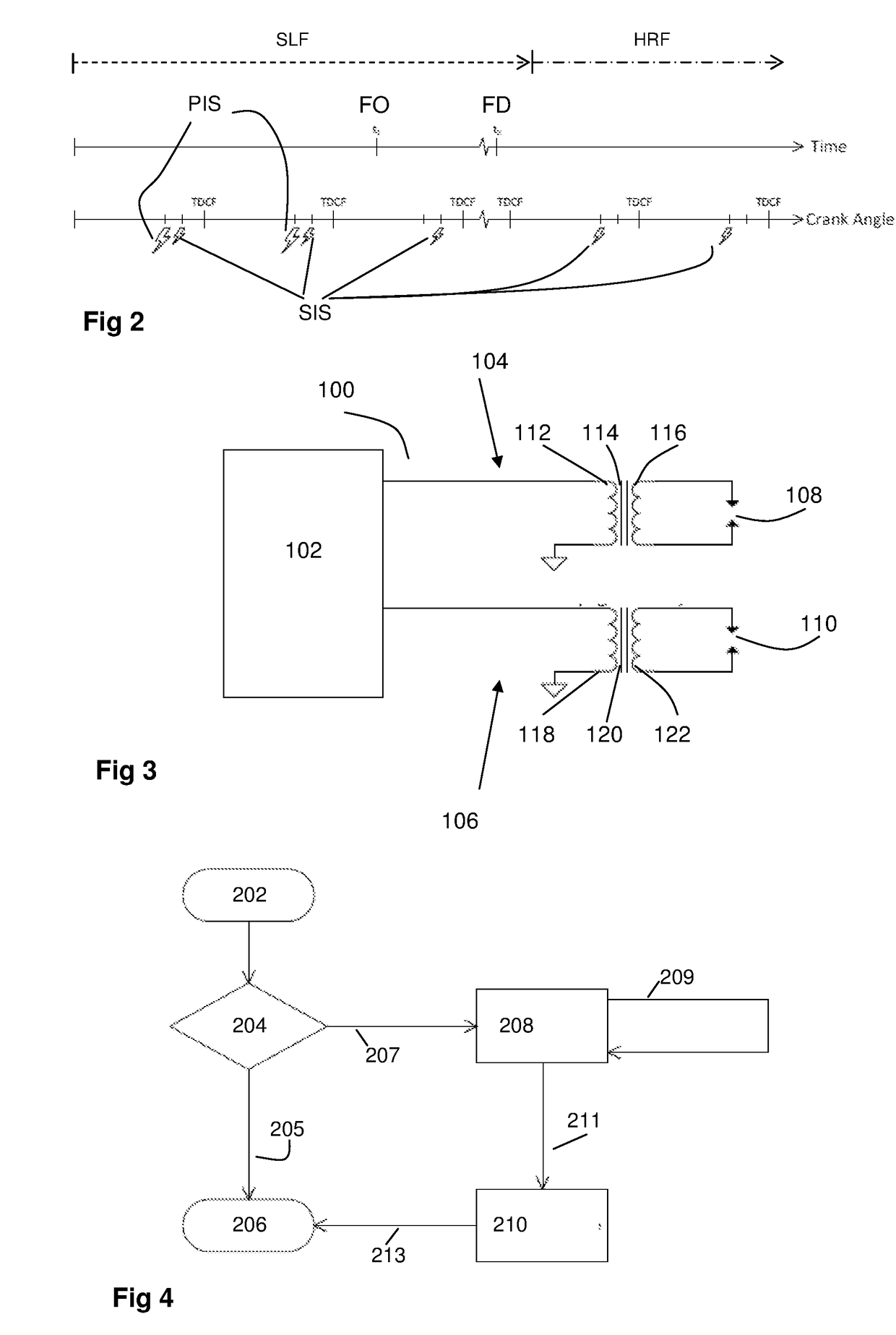Ignition control and system for an engine of an unmanned aerial vehicle (UAV)
a technology for unmanned aerial vehicles and ignition control systems, which is applied in the direction of electric control, ignition automatic control, machines/engines, etc., can solve the problems of increased engine failure risk, complete loss of uav, and uav crash, and achieve optimal combustion and sufficient power
- Summary
- Abstract
- Description
- Claims
- Application Information
AI Technical Summary
Benefits of technology
Problems solved by technology
Method used
Image
Examples
Embodiment Construction
[0076]FIG. 1 shows an embodiment of an ignition system 10 of the present invention.
[0077]A cylinder head 12 of a UAV engine has mounted to it a delivery injector 14 and two spark plugs 20, 26.
[0078]The ignition system 10 includes primary 10a and secondary 10b ignition systems.
[0079]The primary ignition system 10a includes a primary ignition unit 16 electrically connected via a high tension (HT) lead 18 to one of the two spark plugs 20.
[0080]The primary ignition unit 16 converts low voltage (low tension) pulses to high voltage (HT) pulses. The HT pulses result in primary sparking at the respective spark plug 20.
[0081]The primary ignition unit 16 includes an inductive coil having an iron core. Such inductive coils are reliable and produce high power sparking over a short period of time.
[0082]The secondary ignition system 10b includes a secondary ignition unit 22 connected via a second high tension lead 24 to the second spark plug 26.
[0083]In the embodiment described the secondary igni...
PUM
 Login to View More
Login to View More Abstract
Description
Claims
Application Information
 Login to View More
Login to View More - R&D
- Intellectual Property
- Life Sciences
- Materials
- Tech Scout
- Unparalleled Data Quality
- Higher Quality Content
- 60% Fewer Hallucinations
Browse by: Latest US Patents, China's latest patents, Technical Efficacy Thesaurus, Application Domain, Technology Topic, Popular Technical Reports.
© 2025 PatSnap. All rights reserved.Legal|Privacy policy|Modern Slavery Act Transparency Statement|Sitemap|About US| Contact US: help@patsnap.com



